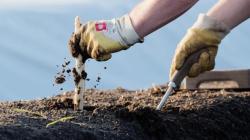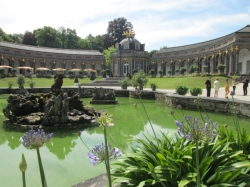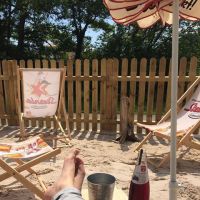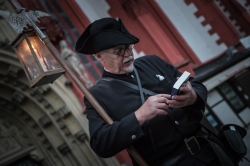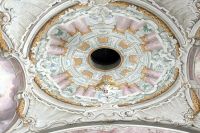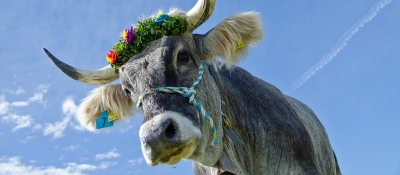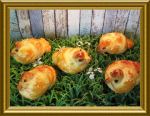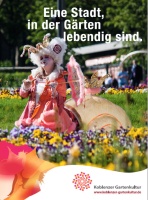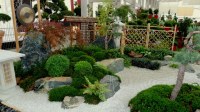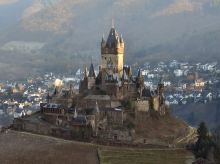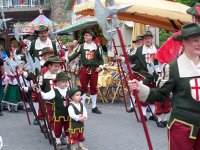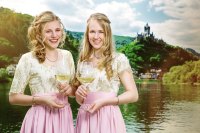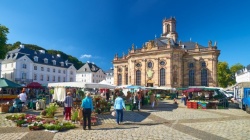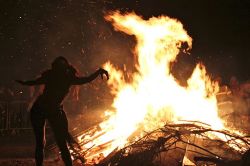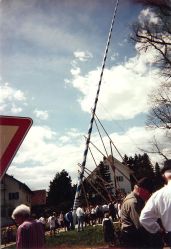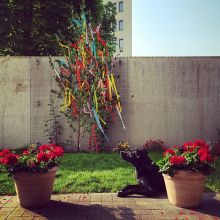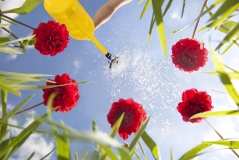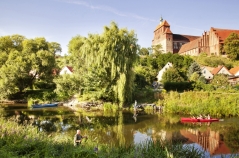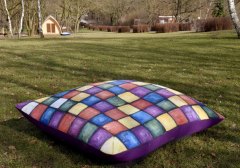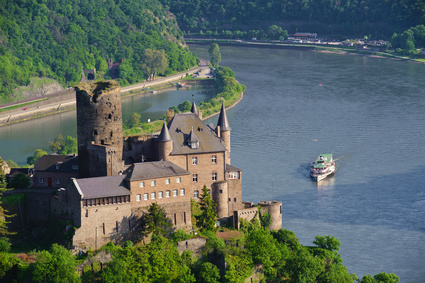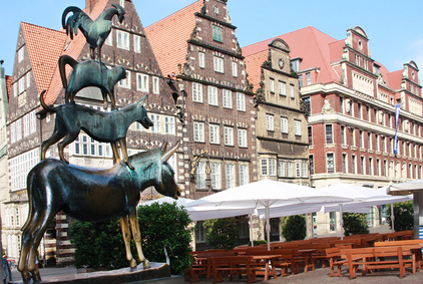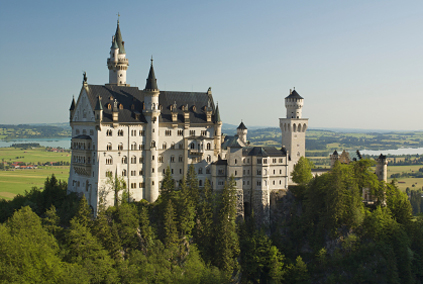Historical meeting place
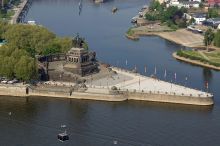 Arriving in Koblenz you will see the artificial headland at the confluence of the Moselle and Rhine rivers called the German Corner – ‘Deutsches Eck’. Even though the term “Deutsches Eck” had been in use since 1216 when Archbishop Theoderich von Wied summoned the knights of the Teutonic Order to gift them a church, the associated hospital and some grounds to safeguard local health care, the area referenced by that term now transferred from these grounds to the headland in the 19th century.
Arriving in Koblenz you will see the artificial headland at the confluence of the Moselle and Rhine rivers called the German Corner – ‘Deutsches Eck’. Even though the term “Deutsches Eck” had been in use since 1216 when Archbishop Theoderich von Wied summoned the knights of the Teutonic Order to gift them a church, the associated hospital and some grounds to safeguard local health care, the area referenced by that term now transferred from these grounds to the headland in the 19th century.
Shortly after the death of Wilhelm I. in 1888 many people wanted to have a monument to honour and thank him for the hard-fought unification (three wars in 1864, 1866 and 1871) of Germany. His son chose Koblenz as site in 1891 due to its significance to his father’s and Germany’s history. After expanding the needed area and collecting 1 million Marks (!) through donations, the equestrian sculpture was dedicated in 1897 with his son in attendance.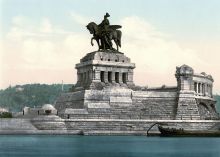
At the end of WWII the monument was destroyed by an artillery shell and the remains were removed and smelted to prevent scavenging. Parts of the figures turned up later and even the head of Wilhelm I, which now is exhibited at the Mittelrhein Museum in Koblenz. The French allies had intended to construct a monument promoting Peace and International Understanding, but the costs were too high and the plans got shelved.
In 1953 it was re-purposed to be a memorial to the German Union. The coat of arms of all the western German Federal States and the missing eastern ones were installed on the pedestal and a flag pole for the German Federal flag installed instead of a central figure.
With the re-unification in 1990 the five new federal states were added to the line-up.
Bring back the old
But, but, there’s a statue, horse, marshal and muse there! Yes indeed! All due to the dedication and financial support of private people again. In 1987 Werner Theisen and his wife Anneliese drew up a legal document pledging their support to the reconstruction of the destroyed monument.
Why? Not sure. It was for his 60th birthday and to commemorate their 30th wedding anniversary, but that still doesn’t quite explain why this couple dedicated such a huge sum of money (3 million Marks) to this particular venture.
As at that time Germany was still divided the offer was rejected as it could send the message that Germany had accepted its divided status. But after the fall of the wall and the official re-unification the politicians changed their tunes and after some tricky ‘gifting’ – meaning changing of financial responsibilities – the statue was finally allowed to be installed.
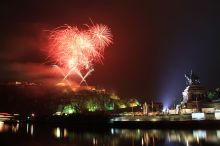 Remarkably, the couple, believing in their mission, had ordered it already in 1989 and brought to Koblenz in 1992! Due to a different production technique than the original, the pedestal needed to be reinforced more and in September 1993 the statue was finally lifted into its place and inaugurated on the 25th of September that year.
Remarkably, the couple, believing in their mission, had ordered it already in 1989 and brought to Koblenz in 1992! Due to a different production technique than the original, the pedestal needed to be reinforced more and in September 1993 the statue was finally lifted into its place and inaugurated on the 25th of September that year.
The unification of Germany and its victims are being remembered with three concrete parts of the Berlin Wall which were erected near the monument in 1990.
Today the space is used not only to commemorate important times in Germany’s history, but to celebrate occasions every day. It is used to hold concerts, marathons, exhibitions and is an excellent viewing point for the annual ‘Rhein in Flammen’ fireworks.
Author: Petra Alsbach-Stevens
Read Full Post »
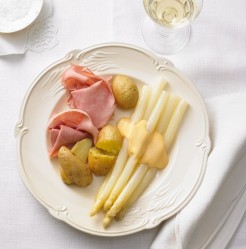 As can be expected, each region in Germany has its own favourite way of preparing and consuming the white gold. If you’re interested, this German cooking site has compiled a list of some regional representative recipes for white asparagus. And I even found an English one, that presents regional food from Rhineland- Westphalia and Hesse. Even though it might be a bit hard to track it down here in New Zealand, one can find them. By word-of-mouth, as the limited supply gets quickly snapped up. Send us a message if you’d like to try it yourself. For now, to get your taste buds tempted, The Classic Recipe.
As can be expected, each region in Germany has its own favourite way of preparing and consuming the white gold. If you’re interested, this German cooking site has compiled a list of some regional representative recipes for white asparagus. And I even found an English one, that presents regional food from Rhineland- Westphalia and Hesse. Even though it might be a bit hard to track it down here in New Zealand, one can find them. By word-of-mouth, as the limited supply gets quickly snapped up. Send us a message if you’d like to try it yourself. For now, to get your taste buds tempted, The Classic Recipe.